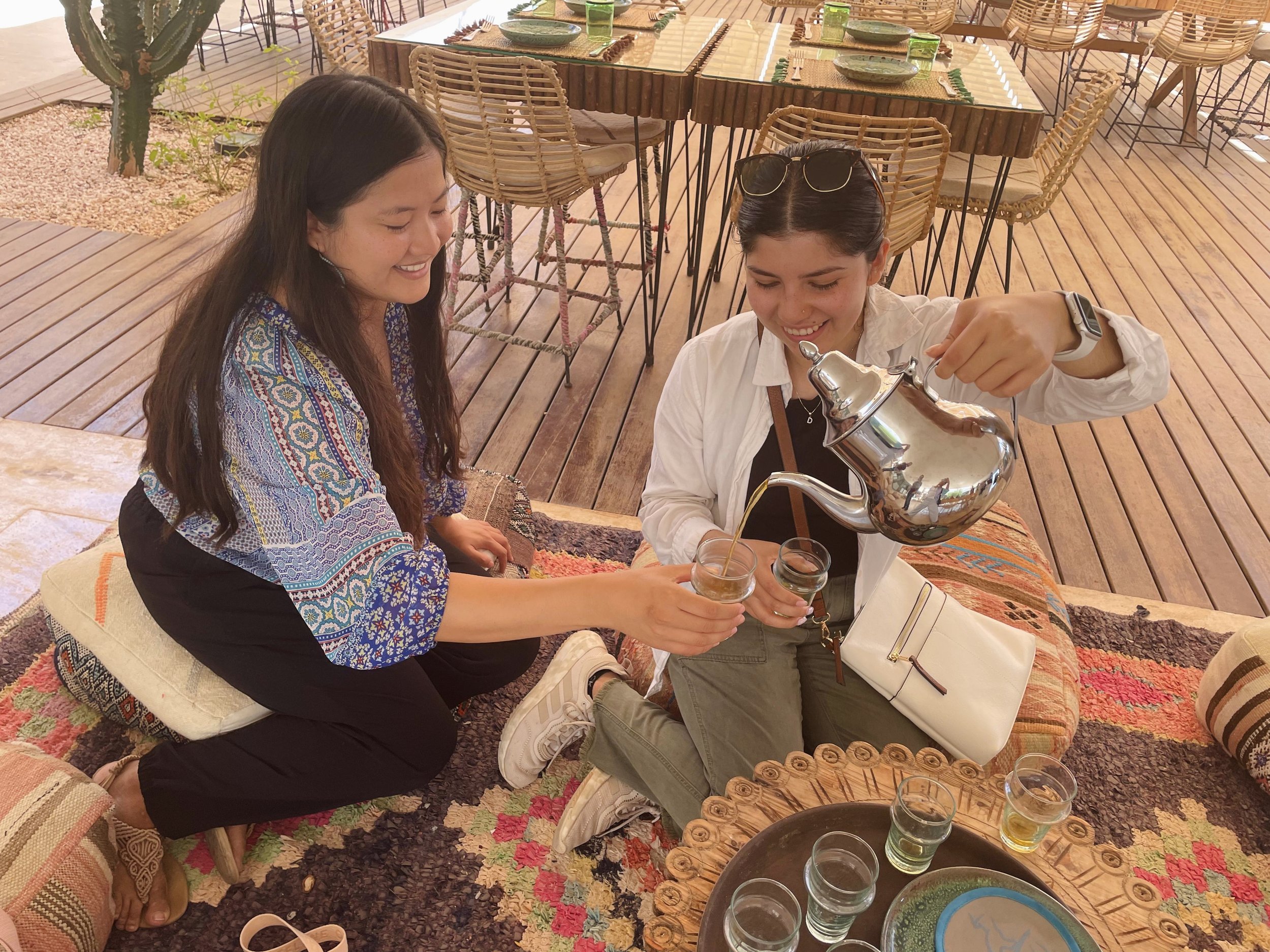Blog #3.20 Moroccan Tea Culture: A Journey into Hospitality and Tradition
In the realm of global tea cultures, Moroccan tea stands out not only for its distinct flavor but also for the unique ritual that accompanies its preparation and serving. Unlike the ceramic tea sets common in the US and Asia, Moroccan tea is traditionally prepared and served with a metal kettle and small, narrow glasses that resemble oversized shot glasses. These glasses are often ornately decorated with silver or gold, adding a touch of elegance to the tea-drinking experience.
A Flavorful Blend: Moroccan tea itself is a robust infusion typically made from gunpowder green tea, known for its tightly rolled leaves resembling pellets or pearls. This type of tea, originally Chinese in origin, has found a beloved place in Moroccan culture, available in local markets in boxes of loose leaves or individual tea bags.
Tea aisle in Carrefour supermarket in Agadir (Photo by Nicolette Lecy)
The tea is commonly infused with spearmint leaves, which impart a refreshing minty flavor. Alternatively, lemon verbena or geranium may also be used, offering varying aromatic profiles that cater to different tastes and occasions. The addition of sugar is a common practice, allowing each cup to be customized to personal preference, whether enjoyed strong and sweet or lightly steeped.
Tea as a Symbol of Hospitality: Beyond its flavor, Moroccan tea holds a symbolic role as a gesture of hospitality. Throughout our travels in Morocco, from household visits to argan oil cooperatives and bustling marketplace shops, we were consistently welcomed with a steaming pot of tea. At our host institution Dar Si Hmad, a non-profit foundation dedicated to education and environmental sustainability, tea is a daily ritual, served alongside coffee, juice, pastries, and fresh fruit each morning.
Tea served at our INRA visit with dates and nuts (Photo by Nicolette Lecy)
Mastering the Art of Tea Making: I had the privilege of learning and photographing the intricate process of preparing Moroccan tea from Atiqa, one of the skilled cooks at the foundation. The process begins with the selection of fresh spearmint leaves, followed by the aromatic gunpowder tea, typically a spoonful per pot. Boiling water is then added to the tea in a small metal kettle, allowing it to steep briefly before pouring out the strong initial infusion into a glass.
Next, Atiqa rinses the tea leaves with water multiple times, a method aimed at cleansing the leaves and ensuring a purer flavor. She then brings the water and tea leaves to a boil on the stovetop, skillfully pouring the tea from a height into a glass and back into the pot several times. This pouring technique not only aerates the tea but also enhances its flavor through thorough mixing.
Finally, the brewed tea is returned to the table, where mint leaves and sugar are added to taste. The tea is then poured and repoured into the teapot multiple times, ensuring that the mint and sugar are thoroughly blended before it is deemed ready to be served.
Morning tea at Foundation Dar Si Hmad (Photo by Nicolette Lecy)
A Cultural Connection Through Tea: In essence, Moroccan tea goes beyond mere refreshment; it embodies a deep-rooted cultural tradition of hospitality and community. Its preparation and serving reflect a meticulous ritual that symbolizes generosity and warmth, making every cup a celebration of Moroccan culture and hospitality. As I savor each sip of Moroccan tea, I am reminded not only of its exquisite taste but also of the rich traditions and the heartfelt hospitality that have accompanied our journey through this enchanting country.
-By Nicolette Lecy, PhD Candidate in Interdisciplinary Humanities at UC-Merced
Nico & Diane enjoying tea at the Targant Museum




